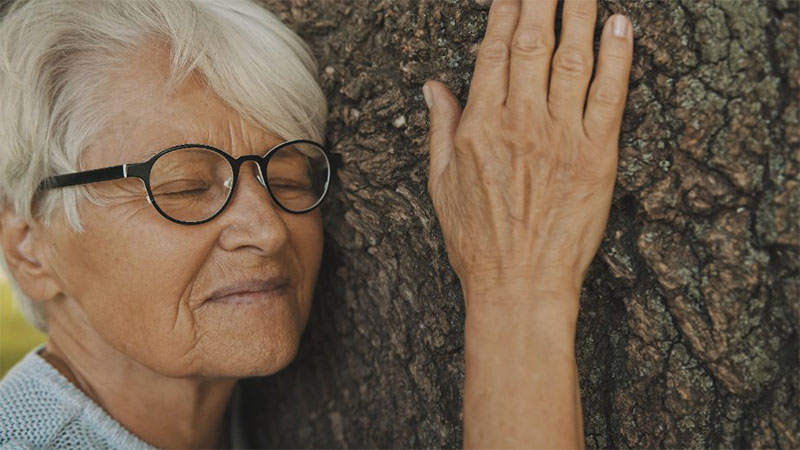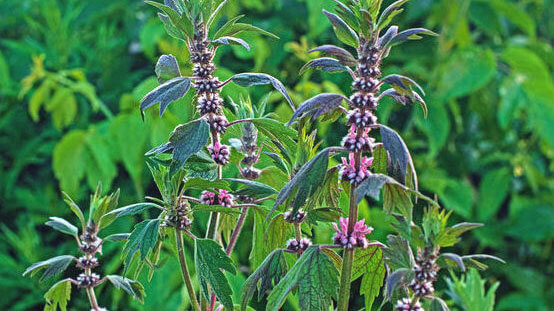Wise Women — Healing Naturally with Herbs

by Corinna Wood
Throughout the ages, wise women have turned to the plants growing around them for healing naturally. Herbal medicines are used to support healing the body, mind and spirit.
Before the healthcare industry took hold—bringing with it a focus on pharmaceuticals—there was folk medicine: tried-and-true home remedies that have sustained and healed for generations.
Before the craze for exotic herbs—dried and shipped from the other side of the planet and delivered in capsules that mimic drug compounds—wise women looked no further than the plants that grew on their doorsteps and in the neighboring woods and fields.
I’ve been an herbalist for decades, schooled in the Wise Woman Tradition of earth-based health and healing. I'm often asked what herbs support healing naturally for women's health concerns.
 In the Wise Woman Tradition, we see nourishment as the foundation for establishing and sustaining optimum health.
In the Wise Woman Tradition, we see nourishment as the foundation for establishing and sustaining optimum health.
Rather than looking at our bodies (or our emotions, for that matter) as something dirty, base or un-holy . . . we embrace and love ourselves, body and soul.
Thus, the wise woman approach to nourishment includes both the physical and emotional aspects.
This means a baseline of solid nutrition—a wide range of whole foods, including healthy fats like coconut oil or organic butter. Coupled with emotional wellness, which begins with the vital (if somewhat arduous and perhaps even radical) step of accepting and loving ourselves.
Still, we may find specific issues calling our attention to the hormonal system, bone strength, or other needs that arise through the physical transitions of our lives.
There are a wide variety of commercially produced vitamins and supplements that many use, but personally I prefer another way, a more natural way . . . a women’s way.
Table of contents
- Healing naturally, the way of wise women before us
- My 4 favorite herbs for women
1. Vitex
2. Nettles
3. Comfrey
4. Motherwort - Wise women healing naturally with herbs
Healing naturally, the way of wise women before us
 In using wise women herbal medicines, one of my guiding principles is that common, local plants can usually provide the support we need to be strong, healthy, and whole.
In using wise women herbal medicines, one of my guiding principles is that common, local plants can usually provide the support we need to be strong, healthy, and whole.
It's not easy for our bodies to absorb heavily processed or synthesized nutrients.
We are, however, physically receptive to the gifts of the plants and herbs that grow in our gardens and woodlands.
It’s how we’re built.
Women, in particular, have very specific needs during different phases of life, from menarche, menstruation and/or childbearing, through menopause and beyond.
In my programs and conferences, women are often wondering about local herbal allies that support women’s bodies through these ages and stages.
Yes, there are. Absolutely.
While there are a myriad of herbs for women, my all-stars are four common herbs that grow naturally or are easily cultivated in most regions of the United States.
Developing a relationship with this small handful of favorite plants can provide for many of your health needs for healing naturally through the seasons of your life.
1) Vitex — Regulating hormones of menopause and menstruation
 Vitex (Vitex-angus-castus), sometimes referred to as “chasteberry,” is a shrub with beautiful, lavender colored cones of blossoms that butterflies love.
Vitex (Vitex-angus-castus), sometimes referred to as “chasteberry,” is a shrub with beautiful, lavender colored cones of blossoms that butterflies love.
Although it grows in the South, it’s not likely to be found wild here—but it is easily cultivated.
In the fall, vitex develops deep brown berries, which can be harvested around the end of October for medicine to support the hormonal system.
Vitex is very powerful at long-term regulation of hormones, working through the pituitary gland, which in turn controls ovarian hormones.
This is an ally to embrace for the long term—although it can take three to six months before results are evident, they are deep and profound.
Vitex helps to balance hormonal symptoms through the menopausal transition, including hot flashes, sleeplessness, and flooding (heavy bleeding). It’s also useful during the menstruating years when getting off the pill, following the birth of a baby, during bouts of PMS, or whenever the hormonal system is a bit wacky. However if you are using hormonal contraception, vitex is not recommended.
Although Vitex tonifies the hormones in any direction needed, it is especially supportive in the progesterone direction.
In our culture, there tends to be a lot of estrogen dominance, recently linked to estrogen-mimicking compounds found in plastics as well as bovine growth hormones found in commercial dairy products (local/organic-sourced dairy is fine). This can contribute to menstrual irregularities including fibroids and endometriosis.
The most effective method for receiving the properties of vitex is in a tincture.
Making your own vitex tincture is easy, following these three steps:
- Pack a jar full of berries (ideally, fresh) and fill the jar with 100 proof vodka
- Cap and leave in a cool, dark place for 6 weeks, shaking daily
- Strain, bottle the liquid and store in a cool, dark place
Take 25-50 drops of the tincture daily (I find first thing in the morning best).
2) Nettles — Building the blood, bones, and adrenals
 Stinging Nettle (Urtica dioica) is one of my all-around favorites.
Stinging Nettle (Urtica dioica) is one of my all-around favorites.
It has amazing nutritive properties that benefit everyone—but are especially generous with women.
Nettles are high in chlorophyll, which is only one molecule away from hemoglobin. That molecule is iron, also abundant in nettles, so this plant is very powerful for building our blood.
As a blood nourisher, nettle is useful through all stages of a woman’s life.
In menarche, it supports young women just coming into their moon cycle.
During menstruating years, it steadily nourishes the bones, the blood, and the adrenals, as well as supporting us in critical times (heavy bleeding, birth and miscarriage).
In menopause, nettle is a valuable ally in many ways, including flooding (extremely heavy bleeding), a common menopausal issue. Nettle’s chlorophyll and iron helps us to avoid anemia.
Because it is so rich in minerals, nettle nourishes the bones. It’s easiest for a woman to build bone mass in her thirties, but coupled with weight-bearing exercise and nourishing foods, nettle can actually help us to continue to build bone mass into menopausal years and beyond.
Nettles support the creation of the bone cells called osteoblasts—the new, young bone cells that contribute to flexibility—so you get the benefit of both bone density and flexibility.
For adrenal support, nettle is a superstar. In our society, especially as women, we tend to have adrenal fatigue and even exhaustion.
We’re subjected daily to adrenal-challenging experiences (even watching the news or driving in traffic can set off a response), as well as adrenal stimulating substances like caffeine, which we use to get a burst of energy.
Brewing nettle infusion instead is a long-term, nourishing way to support adrenal energy without an unnatural spike of adrenaline that ultimately contributes to exhaustion.
In addition to nettle soup as a prime choice, infusions are a food-like form for receiving the nutritive benefits of herbs and are simple to prepare.
If you begin to harvest from your nettle patch in the spring, you can continue to cut them back and harvest all through the season (wear gloves to prevent the sting).
For making infusions—a strong, medicinal tea—you'll start with dried herb. Dry your nettle by hanging it in a cool, dry place until the leaves are nice and crispy.
For making your infusion, follow these simple steps:
- Immerse one cup of dried nettle in a quart of boiling water
- Allow the infusion to sit for at least four hours
- Strain the liquid and store in the refrigerator for several days
At least one cup of infusion per day is recommended, but it’s so satisfying and nourishing, you’ll probably want to enjoy it all day long!
If you'd like a concise reference chart for making tinctures, infusions, vinegars, salves and oils, you're welcome to grab a free copy of my Wise Woman Medicine Making Chart.
3) Comfrey — Supporting sensitive tissues to be strong and supple
 With soft green, fuzzy leaves and a spiral of purple blossoms, comfrey (Symphytum officinale) is a familiar sight in these mountains where the plant has been used medicinally for generations.
With soft green, fuzzy leaves and a spiral of purple blossoms, comfrey (Symphytum officinale) is a familiar sight in these mountains where the plant has been used medicinally for generations.
Also known as “knitbone,” it’s used topically as a poultice, oil, or salve (there is some debate about toxicity when consumed).
Wilted and then steeped in organic olive oil, comfrey oil (or salve, with beeswax melted in) is soothing and moisturizing—promoting cell proliferation. (For instructions on making comfrey salve and oil, see my blog article on comfrey.)
It’s outstanding for maintaining the health and flexibility of the skin.
During pregnancy it’s a powerful ally to improve suppleness of the breast and belly skin as it expands, minimizing stretch marks.
Comfrey salve or oil is excellent for perineal massage prior to birth to promote elasticity and prevent tearing during labor.
While nursing, I found comfrey salve especially helpful in combating sore nipples. Put it on after you’ve nursed to relieve irritation. If concerned about internal use, wash the nipples before nursing again.
During menopause, use comfrey oil or salve to ease vaginal discomfort and strengthen and plump the vaginal tissues, which can become thin, dry, and susceptible to tears as we age.
Comfrey oil can also be used as a sex lubricant (but don’t use it with latex condoms because oil degrades latex). .
4) Motherwort — Menstrual cramps, hot flashes, and mood swings

When you’re having a rough time, it’s comforting to have some “mother” to lean on.
Motherwort (Leonurus cardiaca) is a member of the mint family with maple shaped leaves that is easily cultivated.
As a fast acting complement to vitex, motherwort is useful in regulating menstrual cramps, hot flashes, and hormonal mood swings (especially the ones in the rage direction, if you know what I mean!).
Her taste is sometimes compared to bitter chocolate, so I prefer to take motherwort as a tincture rather than a water-based infusion or tea.
Motherwort can take the edge and intensity off hormonal symptoms within 20 minutes, although symptoms may not disappear completely with the first dose.
Nonetheless, it has a very calming and centering effect, working to regulate the cardiovascular system and helping to quiet heart palpitations, which can be an issue during menopause.
Wise women healing naturally with herbs
When it comes to our health, we crave clarity and understanding. But it’s awfully hard to find a sense of deeper wisdom in the fluorescent glare of a drug store.
It’s all rather cool and impersonal; separate from our everyday lives. The bright packages of over-the-counter medications promise quick fixes—new and improved—while minimizing their more questionable attributes in the small print of the ingredient list.
There is another way.
Reaching back through cultural memory is the Wise Woman Tradition, the oldest tradition of healing on the planet. Healing naturally embraces local plants and wholesome foods to restore and maintain balance and wellbeing.
 And for centuries the wise women practitioners—midwives, healers, herbalists and mothers—have cared for their families and communities in their kitchens and at their hearths.
And for centuries the wise women practitioners—midwives, healers, herbalists and mothers—have cared for their families and communities in their kitchens and at their hearths.
They have passed their skills along from hand to hand and heart to heart.
Quietly. The women's way.
Making friends with these four, and other beneficial local herbs offers you an opportunity to be proactive about your health and wellness in a way that is harmonic with your body’s natural wholeness.
Green blessings!
____________________________________________
Spread the wise woman ways! Link to this article from your website or share with your friends using this button~
Comments ~ what stands out for you today?







